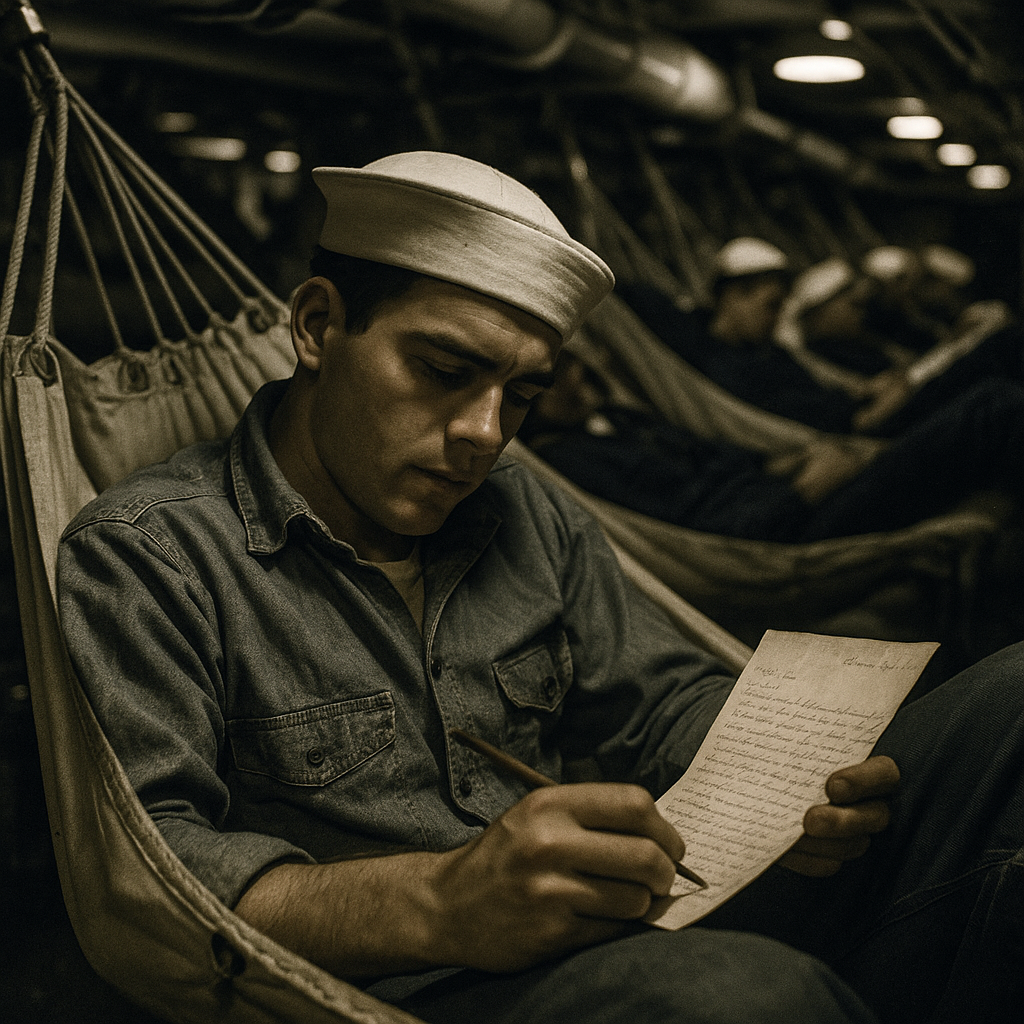U.S.S. Arizona Sailors and the Letters They Left Behind

U.S.S. Arizona Sailors and the Letters They Left Behind
Written by: Bobbi Jo Buhl
They came from small towns across America—farm boys and dreamers who found themselves aboard one of the most powerful battleships in the Pacific. Their letters home reveal the hearts behind the history.
For many of the 1,514 sailors and Marines assigned to the U.S.S. Arizona on Dec. 7, 1941, the battleship was the biggest place they’d ever lived.
More than 40 percent of Americans lived in rural areas back then, and the men of the Arizona reflected that makeup. They came from towns like Rogers, Minnesota (population 247), Avoca, Texas (150), Cleveland, North Dakota (246) and Ririe, Idaho (493).
Shortly after he joined the crew in January 1941, John Dayton Rodgers described his new floating home to his younger sister, Ruth, in western Pennsylvania. “We have a soda fountain, laundry, tailor shop, barbers and stores,” Mr. Rodgers wrote. “I can buy anything from a bucket to a watch on here.”
Whether from farms, small towns or big cities, few of the Arizona men had traveled far from home before they joined the Navy. Most came of age during the Great Depression, when many Americans struggled to keep food on the table.

Walter H. “Bill” Simon grew up east of Philadelphia in Collingswood, New Jersey, and began writing letters to his teenage sister, Louise, on the very day he enlisted in October 1940. He trained at Newport, Rhode Island, but by December was on a train west to join the crew of the Arizona at Bremerton, Washington.
On Dec. 6, 1940, in a letter datelined “somewhere in NY” he wrote, “I seen my first mountains this morning and did they look swell. The farms and stream in the valley look just like a picture book.”
Four days later: “Am now in Oregon in the Mts. The Prettiest place I’ve ever seen.”
As enthusiastic as many of his letters home were, Mr. Simon frequently reminded his sister and widowed father to write to him. Other men were even more direct. At the bottom of a letter from Hawaii to his half sister Muriel in rural Wayne County, Illinois, Leland “Bud” Good penned the word “WRITE!”
One of Mr. Simon’s letters from the fall of 1941 mentioned a homesick friend. “I was that way for a long time myself, but now I just grin and bear it, because I know that I’ll be home with you at my first possible chance.”
A longing for home was a constant theme in the few surviving letters from Arizona men.
Thomas Steger Sanford had just turned 22 and had been in the Navy two months when he wrote to his foster mother in Alabama in December 1940.
“There’s a new bunch of boys just come aboard, and one of them sleeps on a cot next to mine. He’s just a kid. I heard him crying last night, so I got up and dressed and took him for a walk on the deck. The moon was really beautiful. He told me this was his first Christmas away from home. I told him a lot of others were in the same boat, but just hid their feelings so they would not make someone else feel bad. Then I changed the subject and talked about places I had been and things I had done, and soon he joined in, and I think when I went back to bed two hours later he was feeling better. At least he thanked me this morning… I am going to take him ashore with me Christmas Day for dinner.”
Messrs. Rodgers, Simon and Sanford were among the 1,177 Arizona sailors and Marines killed in the Japanese attack on Pearl Harbor, Dec. 7, 1941. They were, respectively, 21, 23 and 23 years old – young men more than 4,000 miles from home.
